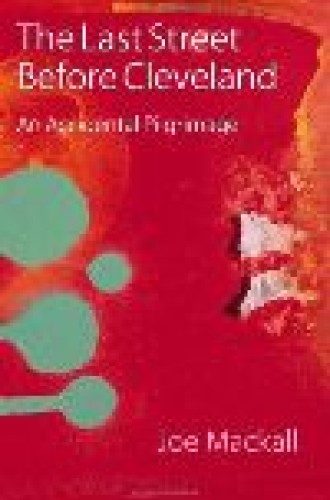The Last Street Before Cleveland
Joe Mackall’s memoir is the story of the author’s “going home again.” Home is Parma, Ohio, and the blue-collar Catholic neighborhood on the edge of Cleveland near a GM plant where he grew up. In this community everyone goes to St. Bridget’s Church and School and lives “the working-class, blue-collar, overtime, debt heavy, layoff-fearing life in the factory.”
Now an English professor, Mackall was the first in his family to go to college. He initially returned to Parma to investigate and write about the troubling life and early death of a childhood friend, Tom McGinty, who was found drunk and dead in his car one night at the age of 37. While Mackall explores Tom’s life and death, his own life is broken open. His going home after 25 years to search for answers about his friend’s death becomes his own search for self—a struggle to understand his working-class roots, his drug addiction and depression, and his loss of religious faith.
The central theme of the book is not surprising—that the journey itself is the only true home. Life and faith are not about any arrival but about the struggles along the road. Yet Mackall writes with rare honesty and a compelling narrative voice. At times he manages a kind of dark humor that opens readers to deeper themes. In one early passage Mackall and his friend, who are altar boys, find the communion wine and hosts in the sacristy and begin to feast. Along the way Mackall discovers that the hosts are made in Milwaukee, which causes him to doubt transubstantiation. “I had stolen wine and drunk it before it had a chance to become Christ’s blood, as if the blood of Christ were anything but cheap wine. I had eaten Christ’s body when it was nothing more than bland flat crackers from Milwaukee.”
Mackall’s disillusionment with religion continues as he grows up in Parma. The early death of his mother due to cancer reinforces his developing disbelief, as does the hypocrisy he perceives in church bureaucracy. Yet Mackall’s spiritual journey in the book, his numerous discoveries and recoveries, all move toward a religious epiphany. It is a moment of re-vision, of seeing again, of recovering faith and a sense of belonging. Though the epiphany seems to warrant more unpacking—it occurs near the end of the book—Mackall frames it powerfully, inviting readers into its timelessness.
I listen to the snow squeaking beneath my feet and the geese honking overhead. I hear an Amish horse and buggy in the distance. . . . Have the clip-clopping hooves always dripped with such exquisite harmony? Down the road I can make out clusters of tiny black angels scurrying against the snow. The sight of these Amish children walking home from school nearly drops me to my knees. The cold wind against my face feels like a frigid grace. An old man in a beat-up blue pickup passes me and waves. It’s as if something has revealed a tear in the surface of things. I see connections everywhere.
The gift of this book is that it causes readers to also perceive “connections everywhere,” to learn to see again as we stumble and grope along toward the holy presence that permeates our ordinary lives.





